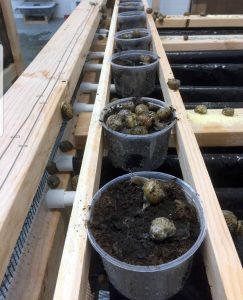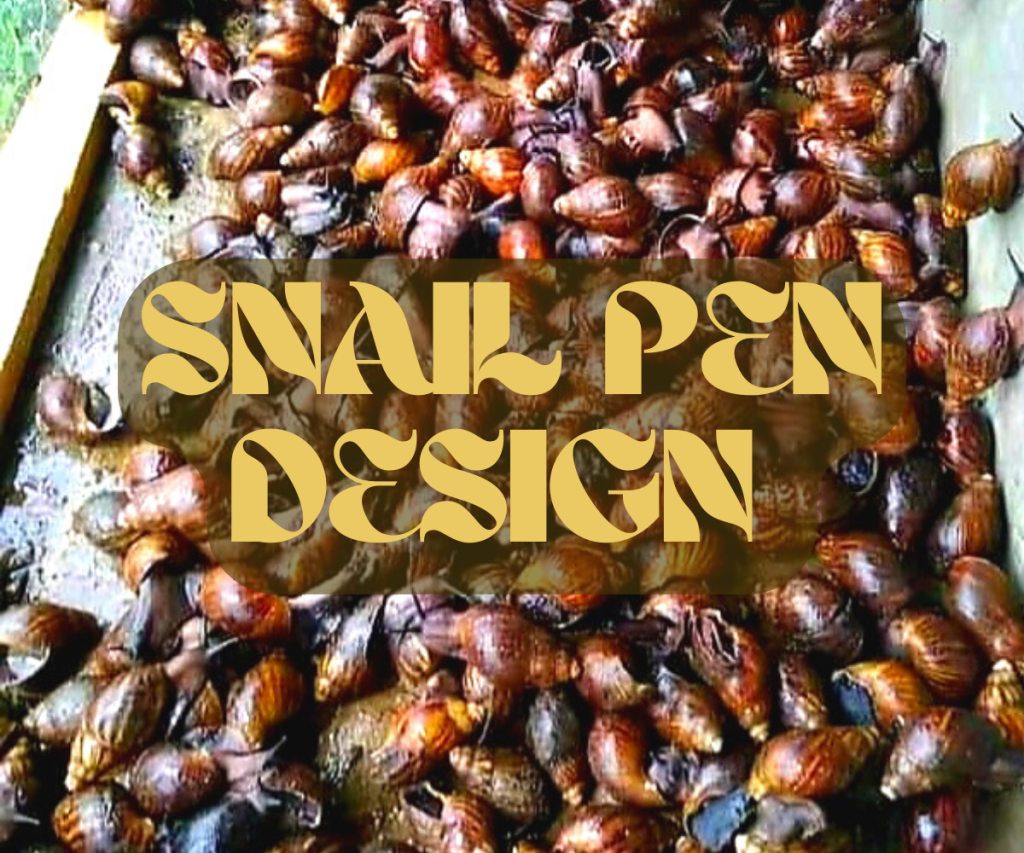This article is dedicated to showing you how to design a snail pen, factors to consider, and types
Every snail farmer needs a pen for his or her snails. Ensuring that your snails have a properly designed pen that makes them comfortable is akin to our need as humans to live in houses.
Pens protect your snails from harsh weather conditions and dangerous predators, and since snails make potent the popular adage that says “slow and steady wins the race” pens have the ability to prevent them from escaping so you do not run at a loss.
As important as a snail pen is for your snails, most usually farmers would require a party snail pen design to fit their livestock.
This pen also needs to be constructed right to support a farmer’s need for either subsistence or commercial snail farming. A Snail pen can otherwise be called snailery, or Snail House.
Let’s find out more on how to design a snail pen.
Factors to Consider for Snail Pen Design
One of the most important things to know about how to design a snail pen is considering factors that may affect or determine your snail pen design.
Some of these factors include;
Site Selection
You need to ensure that your snail pen is located at a good site. A good site is one with favourable temperature, between 25-30 degrees Celsius.
Good topography
Topography is important when considering a snail pen design. So avoid sloppy areas and opt for one with a flat surface and less susceptible to infestation of predators.
Site Space
You need an area with appropriate space, the space on the site should be proportional to the number of snails you intend to rear in the snail pen. It is advised, that 1sq meter of a snail pen should fit 4-6 mature snails and also, 1sq meter should house close to 100 hatchlings (very small snails).
Types of Snail Pen System
They are various types of snail pens, and how to design a snail pen will depend on the individual’s needs.
There are three major type of snail pen systems to choose from, any that best suits your budget.
Intensive Snail Pen
This snail pen is enclosed and designed to recreate habitats snails offering the snail farmer complete control and supervision of the snails’ activities such as feeding, cleaning, hatching, etc.
Examples of this housing pen are Green Houses, Plastic Tunnels, etc. This type of snail pen design requires a large area of land to effectively adopt and obtain full control.
Extensive Snail Housing System
This is the second type of snail pen system, it involves the use of outside pens like old car tires, old drums, baskets and tanks, etc.
This type of snail pen system is 4snail production on a small scale.
Semi-Intensive Pen
Then, there is the semi-intensive snail pen design which is characterized by having some practices of both the intensive and extensive snail pen systems.
It gives room for, egg-laying and hatching to be practiced in a controlled environment as found in the intensive pen system.
Then, when the snails reach 6-8 weeks old they are moved to the outside pens for the rest of their development like in the extensive housing system.
How to Design a Snail Pen (Various Pen Structures)
Having outlined the available snail pen, we will be showing you exactly how to design a snail pen, the structures you need for your snails and how to construct them.
1. Baskets as Pen

What you Need:
Good Baskets (Plastic or Woven)
Chicken Wire
Mosquito Net
Sack
Soil (preferably Loamy)
Step by step procedure involved when using Baskets
Having considered the factors earlier outlined, place basket in a good spot, preferably on a stand.
Lay a sack inside the basket
Proceed to filling the basket with the loamy soil till it gets to a depth of 10-15cm (ensure it is treated organically to kill germs and insects).
Once that is done, spread withered leaves on the soil layer to add nutrients to it.
Then make a cover to fit the basket using the chicken wire and mosquito net and place it over the basket as lid (this cover will protect your snails.)
Take out snails once in 2weeks and change the soil.
2. Old Car Tires as Pen
What you need:
3-4 old car tires
Chicken Wire
Mosquito Nets
Hot Metal Rod
Soil (Treated loamy soil)
Step by Step Procedure when Using Old Car Tires
Get 3-4 old car tires
Pick a good well-shaded location
Mount the tires on each other
Next, fill the tires with loamy soil to a depth of 10-15 cm.
Proceed to cover tires with the chicken wire and mosquito net
Puncture tires for ventilation (but not big enough to allow snail escape)
3. Trench Pens
Trench pens are constructed using cement blocks and can be dug to the ground or set up above. Ideal for commercial snail rearing.
What you Need
Termite and decay resistant Wood
Digging Tool (A shovel)
Wire Mesh (Chicken Wire and Mosquito net)
Concrete (sand and cement mixed in right proportion)
Cement Blocks
Galvanized Sheets (Optional form of a roof over the Trench Pen)
Padlocks
How to Construct Trench Pens
This is usually involves the services of a builder.
First, select the appropriate site
Use the shovel to dig a shallow hole to the ground if its to be set up beneath.
The cement blocks will be raised to about 40-50 cm above the ground level
You can level the inside of the trench pen with concrete (optional)
Ensure the trench pen is properly-drained to prevent waterlogging
Then fill the trench pen with treated loamy soil to a depth of 15-20 cm.
Place withered leaves on the soil to enrich it
And make a cover for the pen with the mesh using the wood as a frame
Cover the pen and padlock it to keep your snails safe.
You can decide to build a roof over the trench pen with the galvanized sheets for shade and control excess water.
4. The Free-Range Pen Design
This is a simple snail pen design that involves a fenced area of land planted with vegetation and short trees that serve to provide food for snails and shelter them from harsh weather conditions.
Also, a free-range pen can be fully enclosed or open
How to Construct a Free-Range Pen
Like those above select the appropriate site to structure your pen on
Fence the area based on the amount of snails you plan on rearing, build your fence with a fine chicken wire mesh.
Proceed to digging your fence to a depth of 20cm to prevent your snails from tunnelling to the ground and escaping.
If you don’t plan on enclosing your pen with a roof, then the height of your fence will be a few inches. While, if you do plan on roofing, consider the height of the highest vegetation, and build your fence a few inches above it.
Always, fill the fenced area with an organically treated loamy soil, so your snails can easily dig into them for protection and also egg laying.
Conclusion
From the above article, we have successfully taken you through both how to design a snail pen and what you need to pull off any of your snail pen design choices.
We look forward to hearing from you on your results.
